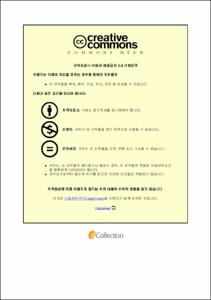신라 원성왕대 독서삼품과 시행과 의미
- Abstract
- This study comprehensively analyzes the political background, content, results, and significance of King Wonseong's accession process and the implementation of the DokseoSamPumgwa(讀書三品科, Three-Grade Literary Examination) during the late Silla period.
After the assassination of King Hyegong, King Wonseong ascended to the throne by defeating Kim Juwon, who had been a strong candidate for succession. However, this process left him with the fundamental challenge of legitimacy instability. As evidenced by Ichan Jegong's refusal to accept appointment as Chief Minister, true-bone aristocratic forces that did not recognize Wonseong's legitimacy still existed. To overcome this, Wonseong attempted to consolidate his power base and strengthen his legitimacy through promoting all civil and military officials by one rank, adopting the Five Temple System reform from King Hyegong's reign, and utilizing the Manpasikjeok legend.
The DokseoSamPumgwa, implemented in the fourth year of King Wonseong's reign (788), was a key policy for strengthening royal authority under these political circumstances. It was a civil service recruitment system closely connected to the National Academy(Gughak), serving not as a graduation examination for the academy but as a separate method for selecting officials that academy students could also take. The examination subjects were divided into superior, middle, and inferior grades. The adoption of the Wenxuan as a core subject for the superior grade stemmed from the practical need for diplomatic skills in interpreting the parallel prose used in Tang imperial edicts. Simultaneously, since the Wenxuan was already part of the National Academy curriculum, this represented a compromise that institutionally recognized the educational privileges of true-bone aristocrats.
The DokseoSampumgwa included an exceptional provision for "those widely versed in the Five Classics, Three Histories, and works of various philosophical schools." Based on the appointments of Jaok and Yangryeol as county magistrates, this provision primarily targeted students who had studied in Tang China. Following the An Lushan Rebellion, this served as a mechanism to co-opt true-bone and sixth-head-rank students studying in Tang who had economic means. It provided true-bone aristocrats with opportunities for official positions without separate examinations, while offering sixth-head-rank scholars chances to partially overcome social limitations.
The short-term success of implementing the DokseoSampumgwa can be confirmed through political changes in Wonseong's seventh year. The suppression of Ichan Jegong's rebellion, the appointment of Wonseong's grandsons Junong and Eonseung to major positions, and the appointment of Kim Eon (presumed to be of sixth-head-rank origin) to the supplementary rank of Samjung Achan demonstrate that Wonseong secured support from certain true-bone aristocrats and achieved political stability.
However, the DokseoSampumgwa failed to ensure institutional sustainability. The abuse of exceptional provisions led to the hollowing out of the examination system, the bone-rank system limited sixth-head-rank appointees to local positions, and favoritism in personnel management persisted. The administrative corruption confirmed in Nokjin's advice during King Heondeok's reign shows that a merit-based bureaucracy was not established even after the DokseoSamPumgwa.
Although the DokseoSampumgwa did not achieve institutional completion in Silla, it holds significant meaning in attempting a transition from kinship-based to academic ability-based talent selection, expanding opportunities for sixth-head-rank intellectuals in official positions, and spreading new awareness of merit-based bureaucracy. The contrast between Choe Chiwon's frustration and his grandson Choe Seungro's success in Goryeo symbolically demonstrates how the intellectual-centered ideology unrealized in Silla was inherited and developed into Goryeo's civil service examination system.|본 연구는 신라 하대 원성왕의 즉위 과정과 독서삼품과 시행의 정치적 배경, 내용, 그리고 그 결과와 의의를 종합적으로 분석한 것이다. 원성왕은 혜공왕 시해 후 유력한 왕위계승자였던 김주원을 제치고 왕위에 올랐으나, 이에 따라 정통성의 불안정함이라는 근본적 과제를 안게 되었다. 이찬 제공의 시중직 임명 거절 사례에서 보듯이 원성왕의 정통성을 인정하지 않는 진골 세력이 여전히 존재하였다. 원성왕은 이를 극복하기 위해 문무백관 의 관작 승진, 혜공왕대 오묘제 개정안의 수용, 만파식적 설화의 활용 등을 통해 자신의 세력 포섭과 정통성 강화를 시도하였다. 원성왕 4년(788)에 시행된 독서삼품과는 이러한 정치적 상황에서 왕권 강 화를 위한 핵심 정책으로 작용하였다. 독서삼품과는 국학과 긴밀한 연관성을 지닌 관인 등용 제도였으나, 국학의 졸업 시험이 아닌 국학생 외의 인물도 응 시할 수 있는 별도의 관인 선발 방식이었다. 시험과목은 상품·중품·하품으로 구분되었으며, 특히 상품 등급에서 문선이 핵심 과목으로 채택된 것은 당의 제서에 사용된 변려문(변체문, 騈體文) 해석 능력이 외교 실무에서 절실히 요 구되었던 현실적 필요에서 비롯되었다. 동시에 문선이 이미 국학의 교과목 이었다는 점에서 진골들의 교육적 기득권을 제도적으로 인정하는 타협적 성 격을 띠었다. 독서삼품과에는 "오경과 삼사, 제자백가의 저서에 널리 통달한 사람"에 대 한 예외 규정이 있었다. 자옥과 양열의 소수 임명 사례를 통해 볼 때, 이는 주로 도당유학생을 대상으로 한 것으로 안사의 난 이후 경제적 여유가 있는 진골과 6두품 도당유학생을 포섭하기 위한 장치였다. 진골에게는 별도의 시험 없이 관직 진출의 기회를, 6두품에게는 신분적 한계를 일정 부분 극복할 기회 를 제공하였다. 독서삼품과 시행의 단기적 성과는 원성왕 7년의 정치적 변화에서 확인된다. 이찬 제공의 반란 진압, 원성왕의 손자들인 준옹과 언승의 주요 관직 임명, 6 두품 출신 김언의 삼중아찬 임명 등은 원성왕이 일정한 진골의 지지를 확보 하고 정치적 안정을 달성했음을 보여준다. 그러나 독서삼품과는 제도적 지속성을 확보하지 못했다. 예외 규정의 남용 으로 인한 시험 제도의 형해화, 골품제로 인한 6두품의 지방관 한정 임용, 그 리고 여전한 정실 인사 등이 제도 본연의 취지를 훼손하였다. 헌덕왕대 녹진 의 조언에서 확인되는 인사행정의 문란은 독서삼품과 이후에도 능력 중심의 관료제가 정착되지 못했음을 보여준다. 비록 독서삼품과는 신라에서 제도적 완성에 이르지 못했으나, 혈연 중심에 서 학문적 능력 중심의 인재 선발로의 전환을 시도하고, 6두품 지식인들의 관 직 진출 기회를 확대하며, 능력주의적 관료제에 대한 새로운 인식을 확산시켰 다는 점에서 중요한 의의를 지닌다. 최치원의 좌절과 그의 손자 최승로의 고 려에서의 성공은 신라에서 실현되지 못한 지식인 중시 사상이 고려 과거제로 계승·발전되었음을 상징적으로 보여준다.
- Issued Date
- 2025
- Awarded Date
- 2025-08
- Type
- Thesis
- Keyword
- 원성왕(元聖王); 독서삼품과(讀書三品科); 국학(國學); 문선(文選); 도당유학생(渡唐留學生)
- Files in This Item:
-
-
Download
 200000903061.pdf
기타 데이터 / 845.6 kB / Adobe PDF
200000903061.pdf
기타 데이터 / 845.6 kB / Adobe PDF
-
Items in Repository are protected by copyright, with all rights reserved, unless otherwise indicated.